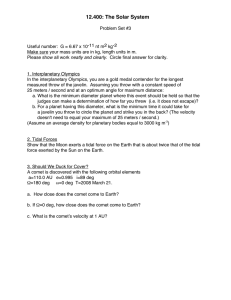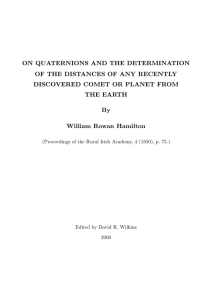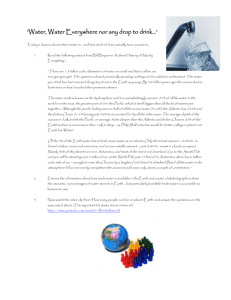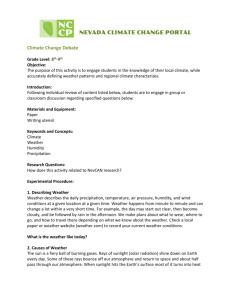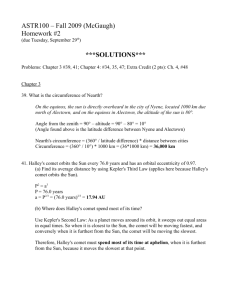EARTH SCIENCE IN-CLASS ACTIVITY Name
advertisement
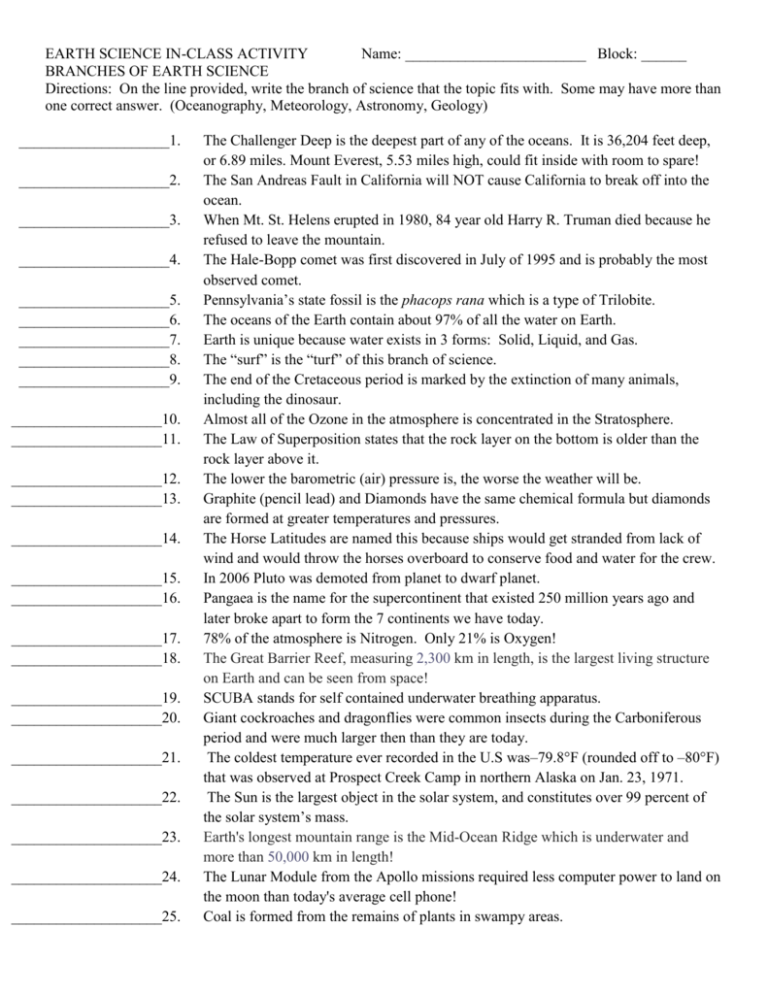
EARTH SCIENCE IN-CLASS ACTIVITY Name: ________________________ Block: ______ BRANCHES OF EARTH SCIENCE Directions: On the line provided, write the branch of science that the topic fits with. Some may have more than one correct answer. (Oceanography, Meteorology, Astronomy, Geology) ____________________1. ____________________2. ____________________3. ____________________4. ____________________5. ____________________6. ____________________7. ____________________8. ____________________9. ____________________10. ____________________11. ____________________12. ____________________13. ____________________14. ____________________15. ____________________16. ____________________17. ____________________18. ____________________19. ____________________20. ____________________21. ____________________22. ____________________23. ____________________24. ____________________25. The Challenger Deep is the deepest part of any of the oceans. It is 36,204 feet deep, or 6.89 miles. Mount Everest, 5.53 miles high, could fit inside with room to spare! The San Andreas Fault in California will NOT cause California to break off into the ocean. When Mt. St. Helens erupted in 1980, 84 year old Harry R. Truman died because he refused to leave the mountain. The Hale-Bopp comet was first discovered in July of 1995 and is probably the most observed comet. Pennsylvania’s state fossil is the phacops rana which is a type of Trilobite. The oceans of the Earth contain about 97% of all the water on Earth. Earth is unique because water exists in 3 forms: Solid, Liquid, and Gas. The “surf” is the “turf” of this branch of science. The end of the Cretaceous period is marked by the extinction of many animals, including the dinosaur. Almost all of the Ozone in the atmosphere is concentrated in the Stratosphere. The Law of Superposition states that the rock layer on the bottom is older than the rock layer above it. The lower the barometric (air) pressure is, the worse the weather will be. Graphite (pencil lead) and Diamonds have the same chemical formula but diamonds are formed at greater temperatures and pressures. The Horse Latitudes are named this because ships would get stranded from lack of wind and would throw the horses overboard to conserve food and water for the crew. In 2006 Pluto was demoted from planet to dwarf planet. Pangaea is the name for the supercontinent that existed 250 million years ago and later broke apart to form the 7 continents we have today. 78% of the atmosphere is Nitrogen. Only 21% is Oxygen! The Great Barrier Reef, measuring 2,300 km in length, is the largest living structure on Earth and can be seen from space! SCUBA stands for self contained underwater breathing apparatus. Giant cockroaches and dragonflies were common insects during the Carboniferous period and were much larger then than they are today. The coldest temperature ever recorded in the U.S was–79.8°F (rounded off to –80°F) that was observed at Prospect Creek Camp in northern Alaska on Jan. 23, 1971. The Sun is the largest object in the solar system, and constitutes over 99 percent of the solar system’s mass. Earth's longest mountain range is the Mid-Ocean Ridge which is underwater and more than 50,000 km in length! The Lunar Module from the Apollo missions required less computer power to land on the moon than today's average cell phone! Coal is formed from the remains of plants in swampy areas.

